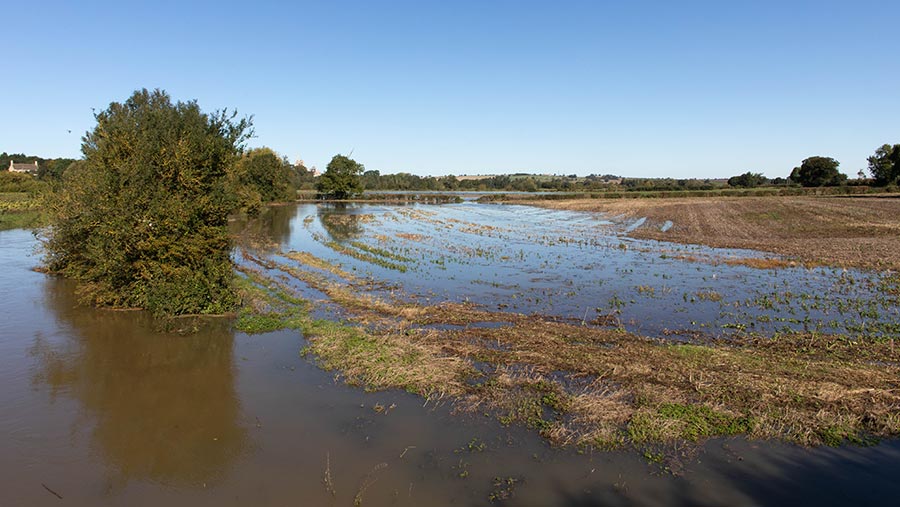UK wheat area drop and shift to spring drilling is forecast
 © Tim Scrivener
© Tim Scrivener This season’s autumn drilling campaign has proved to be a turbulent one, with intense rainstorms disrupting drilling and playing havoc with emerging crops.
As a result, the AHDB is forecasting that the UK wheat crop will drop to its smallest area since 2020, with a 1.3% fall on last year to 1.698m hectares.
The winter barley area is expected to fall by 6% and the spring barley area to rise by 13%.
Spring oats are projected to rise by 12%, with the decline in winter oats more than offset by the bigger spring area.
See also: Autumn deluge floods crops and delays drills
OSR area drops 16%
Despite oilseed rape crops establishing well before the autumn’s heavy rain, the crop is forecast to drop 16% to its smallest area since 2021.
A combination of waterlogged soils and pest pressure will increase crop write-offs.
Given the challenging autumn conditions and the saturated soil, it is likely winter cropping will continue to fall below AHDB indications, with considerable shifts to spring cropping.
Often, when oilseed rape crops fall, pulses tend to fill the break crop gap. However, this does not appear to be the case this season, with pulses falling about 10% from last harvest.
Perhaps the most notable increase in area is an expected 27% uplift of arable fallow from 2023 levels.
Other oilseeds (including linseed and borage) are estimated to be down more than 22%, while other combinable cereals (including rye, triticale and mixed grains) are down 18% and potatoes down 3%.
The last catch-all category, “other crops on arable land” rises 8% and includes sugar beet, vegetables and such things as temporary grass and maize.
AHDB will provide an update on the situation in early 2024 when planting progress allows.
Forecast 2024 cropping area against previous harvests |
|||
|
Crop type |
2023 UK area estimates |
AHDB 2024 forecast (thousand hectares) |
Percentage change |
|
Winter wheat |
1,720 |
1,698 |
-1.3 |
|
Winter barley |
453 |
427 |
-6 |
|
Winter OSR |
388 |
325 |
-16 |
|
Spring barley |
674 |
764 |
+13 |
|
Spring oats |
166 |
186 |
+12 |
|
Note: Official provisional UK area estimates for 2023 are not available. Official provisional estimates are for England and Scotland only. The AHDB assumed no change for Wales and Northern Ireland from 2022 figures and combined those totals with the provisional England and Scotland figures to produce UK area estimates. Source: Defra, Scottish Government and the Anderson Centre for the AHDB |
|||
Intense rain and worst slug pressure in 10 years
Helen Plant, senior cereals and oilseeds analyst at the AHDB, says the intensity of rain has left growers with problems they have not experienced for several years.
“The extent of the issues depends on planting date, local rainfall and soil type, but widespread issues with root development and slugs are reported which will hinder crop development and yields,” she says.
This year has possibly experienced the worst slug pressure for 10 years or longer.
Some growers who have previously never used pellets report the use of multiple applications with limited effect.
“A lot will now depend on the weather conditions of the remaining autumn planting, winter and indeed spring growing periods,” Helen says.
Wheat futures rise
In response to concern about winter wheat crops, November 2024 UK feed wheat futures have already risen above old crop prices.
A smaller area for harvest 2024 could mean tighter supply and stronger demand next season.
UK futures have already moved to prevent pre-season export sales and to position in case higher imports are needed, as has been seen in previous seasons when wet weather has reduced winter plantings.

